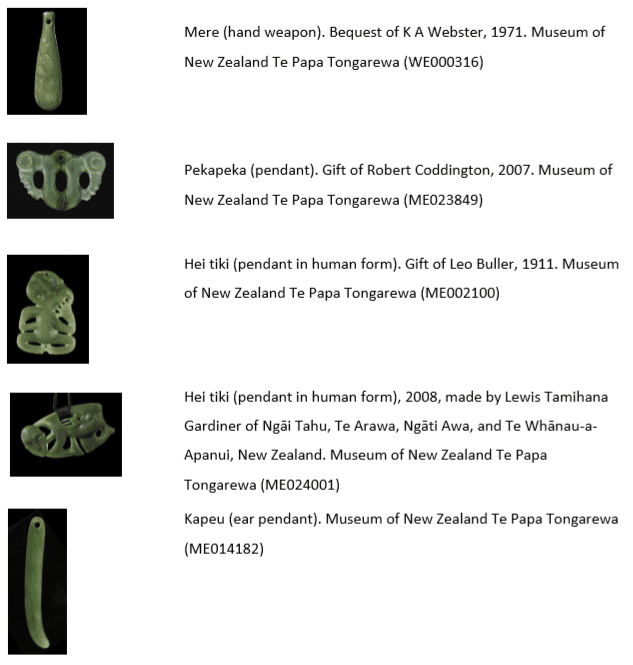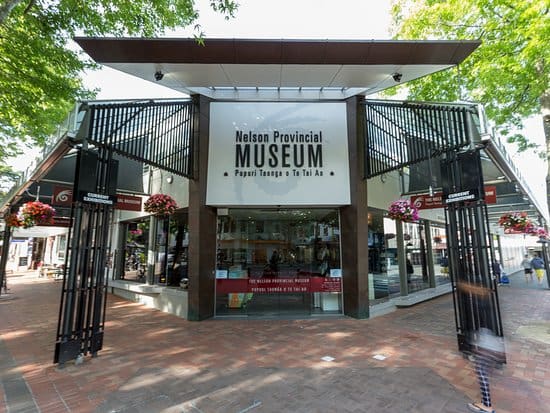Kura Pounamu: Our treasured stone exhibition coming to the Nelson Provincial Museum
An exhibition of more than 200 pounamu greenstone treasures is coming to Nelson
Provincial Museum next month.
Kura Pounamu: Our Treasured Stone, created by Te Papa working closely with Ngāi Tahu and
other iwi, features ancient and contemporary pounamu taonga from all tribal areas of New
Zealand, including the Nelson Tasman region.
Kura Pounamu tells the story of this most precious of stones, its significance to Māori, and
its enduring value from ancient times until today. It will be available to view from 24 August
until 24 November 2019.
Found only in the South Island of New Zealand, pounamu stone – highly coveted by iwi
throughout Aotearoa New Zealand – was known to have been transported many miles from
its source, to be used and traded by Māori. More recently, the treasures have crossed
oceans to be appreciated by visitors in their hundreds of thousands across China and in
Paris, France.
The Nelson based exhibition sees the return of contemporary works created by celebrated
artist Fayne Robinson who connects to local Te Tauihu iwi, as well as loaned treasures from
Richard Nunns and Nelson College. Some of the taonga have a connection to local places
such as Cobb River, D’Urville Island and Port Underwood. Outstanding examples of
traditional toki (tools), hei tiki (pendants in human form), and mere (weapons) form the
majority of the exhibition, with some of the oldest thought to originate from early
settlement times, around 700-800 years ago. Four large pounamu touchstones complete the
over-200 piece collection – the largest of which, “Te Hurika”, weighs 170kg.
Nelson Museum Interim Chief Executive, Olivia Hall, says “It’s rare to see a collection of such
precious taonga in one place, and to know that this place is our museum is an absolute
honour. Te Papa and Ngāi Tahu have given us a stunning showcase and we are delighted to
be able to present it to our locals and visitors this spring. The taonga exhibited in Kura
Pounamu whakapapa to Te Wai Pounamu – so it is very special to have them back here for
our local iwi to connect with.”
Te Papa Kaihautū (Māori leader) Dr Arapata Hakiwai explains that Kura Pounamu: Our
Treasured Stone reaffirms the ancient links and connections iwi from Te Wai Pounamu (the
South Island) have with pounamu.
Having recently shown at Canterbury Museum with strong involvement from Ngāi Tahu iwi
it is appropriate the exhibition now moves to Nelson, one of the seven pounamu source
areas in the south, so that the iwi there can also celebrate their connection to pounamu.
“We acknowledge the close and enduring relationship Ngāti Kuia and Ngāti Koata has with
their ancestral stone, Pounamu, and we acknowledge the pivotal relationship held between
Ngāi Tahu and pounamu further to the south” Dr Hakiwai says.
Te Rūnanga o Ngāi Tahu Kaiwhakahaere Lisa Tumahai says the exhibition is a chance to
showcase the history and importance of pounamu.
“Generations of Ngāi Tahu whānau have shared a special connection with pounamu. It
offers us guidance and protection, and with that comes our duty of kaitiakitanga or
stewardship of this taonga. It’s wonderful to see its significance and heritage shared with a
wide audience here in Aotearoa and overseas.”
About the exhibition
Kura Pounamu: Our Treasured Stone was shown at Te Papa from September 2009 to July
- It was then reworked for touring internationally and was shown at five venues in
China from November 2012 to June 2014, and in Paris from May to October 2017.
About pounamu (greenstone)
For centuries, Māori have prized pounamu for tools, weapons, adornments, and as a symbol
of prestige and authority. For Māori, pounamu remains a potent symbol of cultural identity.
There are two systems for classifying pounamu. Geologically, the name pounamu refers to
three different types of stone: nephrite, bowenite, and serpentinite. Māori classify
pounamu by appearance.
Pounamu is found only in the South Island of New Zealand, Te Wai Pounamu (the
greenstone waters). It begins its journey in the rock where it is formed, then is slowly ‘freed’
by erosion. Most pounamu settles in riverbeds, and some is carried out to sea and scattered
along the coast.
About Nelson Provincial Museum
Nelson Provincial Museum, originally founded in 1841 as the Literary and Scientific
Institution of Nelson, is New Zealand’s oldest museum, with 178 years of service to its
community behind it.
The Museum is steered by the Tasman Bays Heritage Trust (TBHT) and receives core funding
from both the Nelson City and Tasman District Councils. TBHT also cares for the region’s
collection of treasures and heritage objects, including an extensive photographic collection.
The Museum is located in the heart of Nelson City and is a significant local attraction. It
offers a programme of up to four major exhibitions per year alongside a series of public
talks, an educational programme and various exhibition-related workshops to
approximately 90,000 residents and visitors of the Nelson Tasman region.
The Museum’s award winning collection is stored at Isel Park Research Facility. It is best
known for its UNESCO inscribed Tyree Studio Collection of photographs, which documents
the people and the development of the Nelson Tasman region from the 1860s to the 1940s.
Tasman Bays Heritage Trust are guided by the six manawhenua iwi of Nelson Tasman via the
Te Tai Ao Komiti, who advise on matters pertaining to taonga Māori and tikanga.
www.nelsonmuseum.co.nz
About Te Papa
The Museum of New Zealand Te Papa Tongarewa opened in 1998 as an innovative bicultural
museum for the people of New Zealand. It is known globally for its bold, interactive style of
storytelling. At the heart of Te Papa is the partnership between the indigenous Māori
people and Pākeha, or non-Māori New Zealanders.
The name Te Papa Tongarewa can be translated as the place where treasured things are
held.
Te Papa is a multi-disciplinary museum: it is the national museum for science and culture,
and it holds New Zealand’s national art collection.
The museum is the kaitiaki (guardian) of the world’s largest collections of Māori artefacts,
and honours the links between these taonga (treasures) and the communities they are
connected with.
Included in this work is the repatriation programme, which identifies Māori human remains
that are held in overseas collections, and returns them to New Zealand, and where possible,
to their iwi (tribe).
The museum occupies a six-storey building on the waterfront of New Zealand’s capital city,
Wellington. In a country of only four million people, Te Papa welcomes more than 1.5
million visitors a year, making it one of New Zealand’s leading tourist attractions.
www.tepapa.govt.nz
Images
Exhibition hero images:

Nelson Provincial Museum image:

Media enquiries
Nelson Provincial Museum
Natalie Gilberd, 021 848 358, natalie.gilberd@museumnp.org.nz
Te Papa
Ellie Campbell, 029 601 0120

This Post Has 0 Comments